#transhipment
Explore tagged Tumblr posts
Text
MPL Unveils Innovative Sea-to-Air Cargo Transhipment Service for Swift Deliveries.
Follow us The Ship Diary
#maldivesportslimited #transhipmentcargo #aircargo #seacargo
0 notes
Text
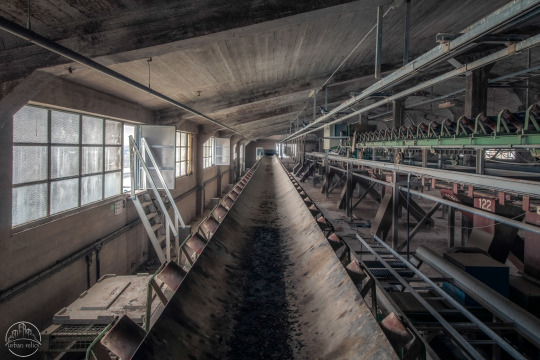
FACTORY H
Factory H is one of three clustered buildings of the "Société Anonyme des Magazins à Grains d'Anvers" (SAMGA). SAMGA was founded in the mid-19th century for the storage, transhipment and trading of grains imported from America and Russia. Factory H can be found together with the other buildings (Factory F and Factory G) at the Amerikadok in the port of Antwerp.
Factory H is the second of these three buildings. The building was marked as architectural heritage. The remarkable grain silos were praised at home and abroad for their revolutionary techniques for treating grains.

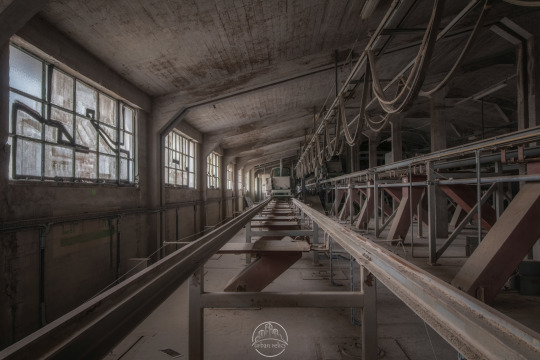
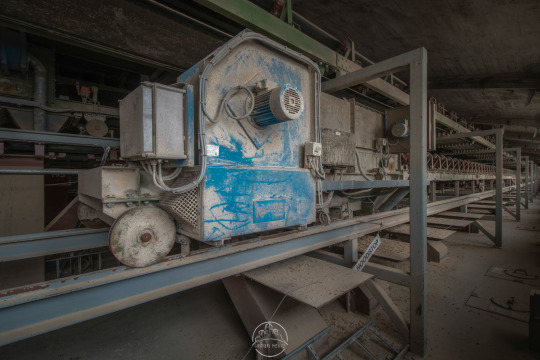

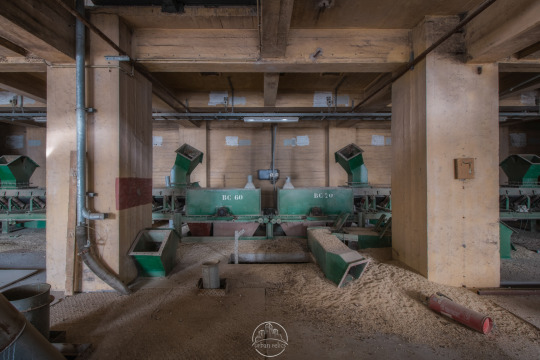

This particular building was erected in 1939, next to the original 1895 building. The building contains 115 silos. Together they can contain more than 27,000 tons of grain.


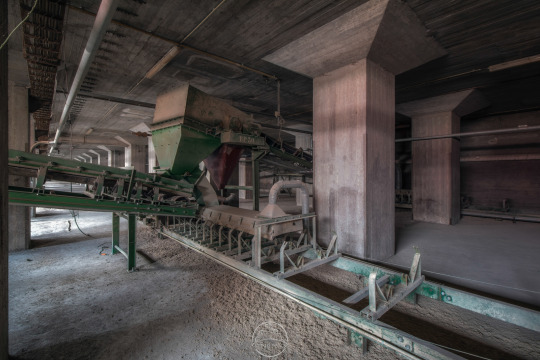

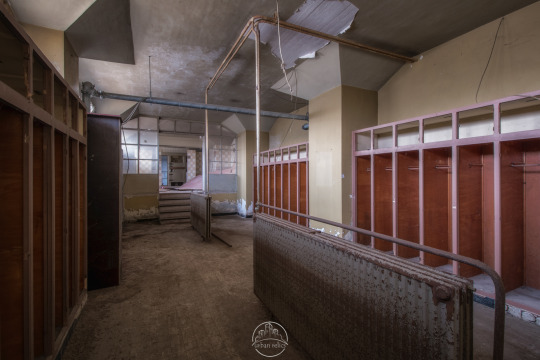
Despite the buildings being included as architectural heritage, the Antwerp municipal council decided to demolish them. The buildings had to make way for the construction of the "Oosterweel" connection, the megalomaniac highway project of the ever-attention-hungry mayor of Antwerp. Demolition of the building started in the spring of 2020. As a result, another magnificent piece of industrial heritage disappeared.

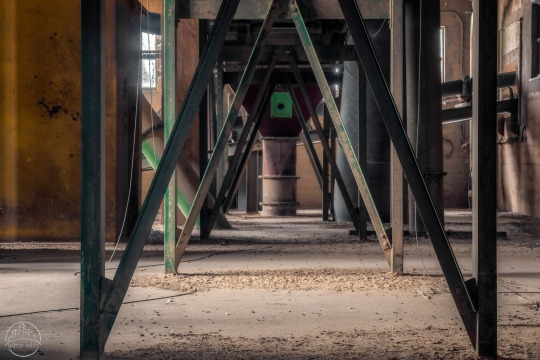
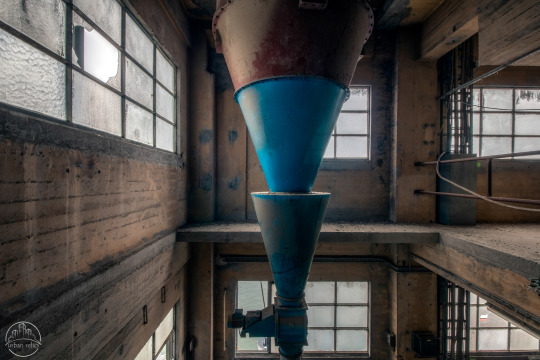
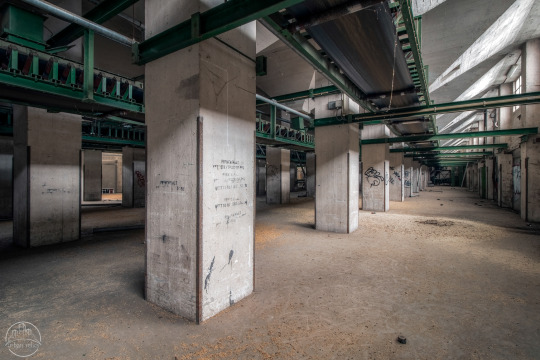
Sunset view of Factory H from the nearby offices of the Antwerp Port Authority. Factory H is the nearest building. Directly behind it is factory G, followed by the white tower of Factory F.
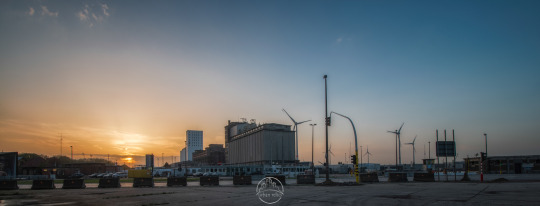
#urban exploration#urbex#abandoned#urban relics#decay#derelict#abandoned places#ue#photography#urbanexploration#urbexpeople#urbexworld#urbexplaces#urbexphotography#belgium#industry#industrial#industrial heritage
59 notes
·
View notes
Text
Okay, snippet on this prompt from @scintillyyy:
“Something’s wrong with Nightwing.” Barbara heard the sound of a soft thud behind her as Tim dropped from the ceiling, his swirling cape reflecting in the computer monitors.
Barbara looked up from the computer where she was working with Wendy on untangling the finances of a smuggling ring. “And you just now noticed? He’s been like that for months.”
“I didn’t know Nightwing was in town,” said Wendy, looking at Barbara in confusion.
Tim grimaced and shook his head. “I don’t mean how he’s been acting since…you know when. When he became broody. This is new.”
“And you came to me with it? Red Robin. I know you missed a lot when you were out of town, but we’re not really on speaking terms right now.”
Tim sighed and hooked a chair over with his ankle, collapsing into it in a boneless way that reminded Barbara far too much of Dick. “Give me some credit. This isn’t me interfering in one of your feuds. He’s acting weird. Like he’s about to disappear on a long term undercover mission weird.”
Barbara swung her chair around and looked, really looked, at Tim’s face. She still wasn’t used to reading his expressions under a cowl, but the stubborn, mulish set of his mouth was familiar, like he expected not to be believed but was going to do something anyway. “Rob,” she said gently. He flinched. She winced. He clearly was going to talk around the subject while Wendy was here. “Wendy, can you keep working on this? I think I need a cup of coffee.”
Tim followed her to the kitchen, cowl still up. Barbara poured two mugs of coffee, as Tim fidgeted with teaspoons and her favourite sugar jar. “After all this time, is this really a cowl sort of conversation, Boy Wonder?”
Tim tugged his cowl down so she could see his face, then accepted the mug she thrust into his hands. “Dick’s acting weird. And I’m not talking about anything regarding Damian!” he said heatedly, as Barbara sighed. “It’s fine I know Damian’s his Robin now, I know every Batman and Robin relationship is different. But he’s not acting like Dick.”
“What happened?”
“There was a firefight at that warehouse down by the docks, the one we’re staking out for Intergang weapon transhipments. Batman and Robin had been checking it out but I heard the sound over comms and swung over to help. It was a bit of a mess, seemed to be a load of theme weapons, so a lot of weird stuff went off. The henchmen didn’t seem familiar with a lot of it. But right near the end of the fight someone sent a golden boomerang at me and it just missed my shoulder before hitting the wall. We got everyone tied up, alerted the cops, and then Dick just…left. He just looked through me, Barbara. He said ‘Thanks for the assist’ and swung off.”
“And there was a boomerang stuck in the wall?”
Tim looked slightly paler than usual, and nodded. “Yeah. And he didn’t say anything. To me.”
“He didn’t check on you at all?”
“He just fussed over Damian.”
Barbara took a deep sip of her coffee. “You’re right. That is weird.” She looked sharply at Tim, who was staring down into his mug, as if it held the secrets of the universe. “Are you all right?”
Tim let out a slow breath. “I’d be better if I knew what was wrong with Dick.”
82 notes
·
View notes
Text
just as info... because im a bitch who has to over explain everything...
i am on like, not semi hiatus but def. semi slow down for a bit and here's why. under the cut is a lot of boring work garbage, feel free to ignore lol
ok SO here's the thing
i think i mentioned it before but like a month or two ago my company fired five people, four of which were like directly in my operations group. we are a bulk liquid e.xport team that specializes in fle.xi bags being loaded like... well, with bulk liquids lmao. its not super hard but it is TEDIOUS as fuck what i have to do on a daily basis.
i have direct contact with suppliers and traders purchasing from suppliers and i coordinate the full movement of product so basically customer tells me: i need X amt of product moved from point a in the usa to point b in the world. they specify, often, the particulars of like.. what steamship lines to use based on rate, or like on end destination preferences, and they expect us to typically coordinate the trucker to pick up food grade containers that then live load or transload at a supplier's plant and then get ingated back into whatever port terminal to get on a vessel and make specific arrival times at their end destination.
like idk some of u might even be in this industry too, so u kno what i mean.
the PROBLEM is that i am expected to get the booking with the ssl, coordinate the trucker, make sure the product gets loaded both within the customer's expected window + within a window where containers can be ingated against said booking's vessel, with OUT additional cost (so things can't sit on yards and get storage or detention for drivers or have additional legs in the trucking which means more money to pay trucker ect ect) and i have to load the amount the customer requests AND
Sometimes the product has to go on rail and that has specific regulations and sometimes the product is hazardous and has to be pre approved on the SSL to even be booked but the customer sent a request asking to load the next week so they get mad you dont get a confirmation within the same day because the haz approval has to be granted by the transhipment port half way across the world too because SOME ports don't take haz and some do but only certain kinds and and and and....
sometimes there is a vessel congestion in the ports or bad weather that shuts down ports or plants, or sometimes drivers have mechnical issues or just miss their fkn appts to load or show up with wrong equipment or ... or there is no container your driver can find because the ssl is out of them at that particular port location or...
yeah.
and so take that and then give me one account that is incredibly picky, sends requests last minute, mostly of randomly haz bullshit, and expects u to lick their boots....
and then another account where i am expected to maintain a perfect constant flow of bookings out of four different ports and the amount expected is like... ohhh 28 a week out of one, 10 out of another, 20 out of two others... and THEN that same customer sends you 75 FUCKING RAILCARS TO ONE SINGLE RAILSPUR/TRUCKER THAT CAN ONLY TRANSLOAD TWO A DAY, MAYBE FOUR TOPS, AND and your boss told them that there would be NO storage charged back to them so you have to now hope to god all the railcars dont show up at once because then you have to meet that four day vessel window and at MOST can load out like 10 of the railcars, if that, if you are lucky with perfect conditions but WHOOPS ALL 75 ARE THERE AT ONCE SO ACTUALLY fuck your life you get storage on 65 railcars and it shows on YOUR account that you lost money
and also?
you have to do the customs filing and documentation for destination arrival and have a window for that too and must have the info perfect or there is charges for fucking it up or containers getting stuck in customs at the destination...
yeah.
my co workers are overwhelmed and they have like maybe 60 containers on their desk a month?
my fucking dumb ass customer gives me a total currently of 450.
and yes, they fired people so i dont have a lot of back up until they hire someone new to take over this single stupid account so i can focus on others.
ive been working from like 6am to 7pm if not later because of this. im looking at other jobs but nothing pays as well currently and i technically like my team its just frustrating because ... yeah.
i hate this industry. i haaaaate it. supposedly im good at it but i dont care. i just want to survive having to pay rent or car payments and getting food, you know?
and i want to be able to do what i love which is write... and this job is melting my brain and just got exponentially more ugly within the last two weeks.
so anyway thats where im at and until i either change jobs or my desk chills out or they hire someone OR i get back on my adhd meds (lol that is really NOT helping to be off of them) im going to be slow.
but whatever, yall are great and i know those that want to will stick around so i appreciate you
thanks for coming to my ted talk bye
6 notes
·
View notes
Text
It’s difficult to estimate with any precision the volume of trade flowing between Rome and Gaul. But the number of shipwrecks found off the Gaulish coast surges after 150 BC, peaking at about 100 BC. This suggests an exponential rise in the volume of trade over that half century.
For the most part, the vessels’ cargos were dominated by wine. The Madrague de Giens wreck was carrying around 7,000 amphorae when it sank off Hyères (south-eastern France) in about 50 BC. The quantity of amphorae discovered on the wreck suggests that the annual export of wine to the Gauls had reached about 100,000 hectolitres a year by the first century BC – a volume that would have generated about 40 million amphorae over the century. It is hardly surprising, then, that the Roman stereotype of a Gallic man was of a drunkard slurping wine through his long, drooping moustache.
The wine was transported along two major trade routes. One started at Narbo (modern-day Narbonne, founded in 118 BC), snaked along the river Aude and then overland to Tolosa (Toulouse) on the Garonne. The other travelled up the Rhône to Cabillonum (Chalon-sur-Saône) in the territory of the Aedui.
From these major transhipment centres, the wine was then taken into Gaulish territory to the principal settlements within easy reach of the frontier – places such as Bibracte, Jœuvres, Essalois and Montmerlhe. Roman traders may well have been resident in these native centres to oversee the exchanges. There were certainly Italian merchants in Cabillonum as late as 52 BC. These men were charged with ensuring a steady flow of slaves to markets in a bid to meet the Roman estates’ demand for a staggering 15,000 Gaulish slaves every year.
— The Celts: were they friends or foes of the Romans?
#barry cunliffe#the celts: were they friends or foes of the romans#history#classics#economics#trade#commerce#transport#maritime history#food and drink#alcohol#archaeology#slavery#ancient rome#gaul#roman gaul#celts
11 notes
·
View notes
Text
Transhipment stratergy - first send your deputy, test it & then join with your team...
6 notes
·
View notes
Text






Here are some cart rut vids. But also I forgot to mention that amongst the ruts, I found a Punic Tomb. This is how they were able to date the cart ruts to be so old, because they run through the tomb, which means they were made before it. Here's more info on the Punics:
Punic Wars, also called Carthaginian Wars, (264–146 bce), a series of three wars between the Roman Republic and the Carthaginian (Punic) empire, resulting in the destruction of Carthage, the enslavement of its population, and Roman hegemony over the western Mediterranean.
The word 'Punic' derives from the word 'Phoenician' (phoinix in Greek or punicus in Latin), and refers to the citizens of Carthage, who were descended from the Phoenicians.
The Phoenicians were highly civilized people who used the Maltese islands as a stop on their trade routes – a bit like the transhipment industry that has developed here centuries later.
My thoughts: If this Punic tomb is found amongst the cart ruts, maybe it's around where the person buried was working when they were killed or found, lending more credence to the idea that the tracks were made by the Phoenicians.
3 notes
·
View notes
Text

Cristina Landi, "Maddalena", 2015, olio su tela, cm 50 x 50, Firenze. Versione moderna della Maddalena. Il profumo, la collana e il libro richiamano il simbolismo della Maddalena penitente delle opere classiche. Una Maddalena in chiave moderna, le cui forme sinuose si stagliano su uno sfondo buio che ne evidenzia ancor di più l'eburneo candore. La sua nudità sembra quasi trasbordare da un drappo rosso che lascia solo immaginare ciò che la posa non mostra, esaltandone maggiormente la fiera ed elegante sensualità.
Cristina Landi, "Maddalena", 2015, oil on canvas, cm 50 x 50, Firenze. Modern version of La Maddalena. The scent, the necklace and the book recall the symbolism of the penitent Magdalene of classical works. Maddalena in a modern key, whose sinuous shapes stand out against a dark background which highlights even more the ivory whiteness. His nakedness seems transhipped from a red cloth that leaves only imagine what the painting does not show, highlighting the most proud and elegant sensuality.
Da una foto di Sharin Mansonlavey Model: Sharin Mansonlavey - Modella Ph: Massimo Grosso
#realism#hiperrealismo#iperrealismo#italianart#italian art#oilpainting#oil on canvas#artists on tumblr#pittura ad olio#oliosutela#maddalena#woman#womenartists#women artists#art#traditional art#art detail#artistsontumblr#artist of the day#classic#classic art
2 notes
·
View notes
Text
The Importance of Delivery Software in Last-mile Connectivity
Most customers don’t know how goods are transported and the complex work involved in the entire operation. The process starting from the point of ordering to reaching the final receipt at the destination can be confusing if not automated with a proper software designed for last-minute delivery. It is complicated work to keep a tab on the movement if you don’t use Delivery Management Software.
Here are the advantages of using a delivery management system in the last-mile experience of customers.
The entire operation becomes transparent and customers can directly log into your website or app and check all information on a real-time basis. The customer can monitor the exact location of the merchandise, arrival, and departure at each point of transhipment, details of the delivery agent (or driver), and a graphical display of the route. A good last-mile experience is important if you want to give users a historic experience.
Delivery management software has a wide range of functionalities that are difficult to manage manually. The problem with manual delivery is that they are prone to human errors and inefficiency. The software can auto-assign tasks for drivers automatically and minimize human attention. It can schedule delivery, notify customers in advance and overall reduce the burden on the delivery teamwork. Overall such software increases your brand’s reputation.
Last-mile route operation with the software will improve better utilization of vehicles. The software will calculate using intelligent algorithms for determining the shortest route the driver should take, traffic density in the route, weather forecasts, and the ability of the vehicle being used. It can locate the nearest driver available and maximize the number of stops the person can service. Management software for delivery can be used for analyzing by using historical stored data.
Software handling the last-mile segment will help the business operator in making accurate delivery charge calculations. It can calculate charges based on a flat-rate basis, variable charges calculated based on pickup and drop points, minimum charges (example 2 KMS) with provision for additional charges on the actual distance covered, and in eligible cases free delivery. The benefit is you can give customers a transparent and rationalized tariff card.
Your delivery business will have limitless benefits such as: quicker deliveries, time-bound delivery commitment, precision delivery point locating, direct customer-to-driver communication, operational transparency to all stakeholders in the loop, and a higher level of customer satisfaction that will increase revenue flow and profit.
Why Outfleet?
Outfleet is a reputed Delivery Management System that focuses on customer satisfaction and ease of operation in the last-mile delivery of all types of merchandise. Within your business, it can improve individual productivity and solve all delivery-related issues. It has every feature a last-mile business will want.
Source : https://www.outfleet.com/blog/the-importance-of-delivery-software-in-Last-mile-connectivity
#delivery tracking software#Delivery management system#delivery management software#on demand app development
2 notes
·
View notes
Text
Mombasa Port Records 300% Surge in Transhipment Traffic Amid Festive Season Boost
The number of vessels docking at the Mombasa Port has recorded an increase, with Kenya Airports Authority(KPA) announcing a 300% increase in transhipment traffic. According to KPA, the increase in the number of vessels docking at the facility follows increased intervention to boost economic activities by the government. Additionally, the increase in the number of vessels docking at the facility…
0 notes
Text
Adani Withdraws US Funding for Colombo Port Project, Opts for Self-Financing
Billionaire Gautam Adani’s conglomerate has decided to fund the development of the Colombo West International Terminal (CWIT) in Sri Lanka using its internal resources, foregoing a previously arranged loan from the US International Development Finance Corporation (DFC).
Adani Ports and Special Economic Zone Ltd (APSEZ), which holds a 51% stake in the project, confirmed in a regulatory filing on Tuesday that the venture remains on track for completion and is scheduled to be operational by early 2025. The decision to opt for self-financing aligns with the company’s capital management strategy, ensuring greater control over the project’s execution.
In November 2022, DFC had agreed to extend a $553 million loan for the project as part of the US government’s broader strategy to counter China’s growing influence in the region. However, the agreement faced delays when DFC requested amendments to align with its conditions. These amendments were subsequently reviewed by Sri Lanka’s Attorney General. Amid the stalled loan process, Adani Ports chose to proceed independently, withdrawing its 2023 request for DFC financing.
The CWIT project is a significant development at the Port of Colombo, the largest and busiest transhipment hub in the Indian Ocean. Operated at over 90% capacity since 2021, the port urgently requires additional infrastructure to meet growing demand. With an investment of over $700 million, the CWIT is being developed as a joint initiative between Adani Ports, Sri Lankan conglomerate John Keells Holdings, and the Sri Lanka Ports Authority (SLPA).
The terminal, upon completion, will be Sri Lanka’s largest and deepest container terminal, boasting a quay length of 1,400 metres and a depth of 20 metres. Designed to accommodate Ultra Large Container Vessels (ULCVs) with capacities of up to 24,000 TEUs, the facility is expected to handle over 3.2 million TEUs annually.
The project’s significance goes beyond its economic implications. Its location along major shipping routes in the Bay of Bengal positions it as a key player in regional trade and geopolitics, serving growing economies in South Asia.
Despite recent controversies surrounding the Adani Group, including bribery allegations that the company denies, APSEZ has demonstrated robust financial stability. As of September 2024, the firm reported cash reserves of $1.1 billion and an operating profit of $2.3 billion in the past year.
The move highlights Adani Group’s confidence in delivering world-class infrastructure while maintaining independence in its financial operations.
For more business news India in Hindi, subscribe our newsletter!
#werindia#leading india news source#top news stories#top news headlines#top news of the day#world business#world business news
0 notes
Text
one more rant for the day.
As none of you know I work in transportation, specifically I load trailers with boxes.
now for this rant I will not explain any positions or words I am using I am simply ranting.
So I work in tranship and it was very quite up there in the morning barley any freight coming down, thats cool I can vie out to my music, anyway one of my work friends/kind of boss in tranship comes in to my trailer and says that their going to start unloading a specific trailer and if I can go into 10 when it starts to get busy.
No problem for me, I enjoy loading the busy trailers, so 10 starts to get busy I walk in music playing the freight hasn't even made it to me when another friend/ coworker/ boss walks in and tells me that the supervisor wants me down in rejects.
"Why?" I ask "They said they wanted to get you out of your comfort zone," "But I don't want to I like my comfort zone." "Thats what I told him, If you get overwhelmed down there you can ask to come back up here" (Side note I love this coworker so much because they are very accommodating)
Anyway I go down to rejects and OH. MY. FUCKING. GODS! It was so boring, like my brain was shutting down boring.
We cleared the freight no issue and the girl I was with asked how I felt after dealing with that madness and I was so confused because it was so nothing, I've been in tranship where all the lines have blue lights on with only two people!
There was nothing to do, 4 people was too many people.
Anyway, I was looking at the conveyor overhead and looking at the freight still on it and the lack of local vans and I knew they were getting smashed in tranship so I asked to go back up and low and behold they were getting smashed
anyway, I was back in my zone and rejects is the worst place ever not because it's hard but because it's boring.
0 notes
Text
Port of Tanjung Pelepas Recognized With Supply Chain Innovator Award
Port of Tanjung Pelepas (PTP), Malaysia’s largest transhipment hub, was honoured with the Supply Chain Innovator of the Year: Digital Transformation Award at the 2024 Supply Chain Asia Awards on Friday, Oct. 18. The award recognizes the port’s use of Navis maritime solutions from Kaleris to power data-driven decision-making capabilities, predictive analytics, and real-time monitoring as part of…
0 notes
Text
0 notes
Text
How Can I Avoid Delays and Penalties in Hazardous Cargo Customs Clearance?
Understanding the Complexities of Hazardous Cargo Customs Clearance Mumbai
Customs clearance for hazardous cargo is a complex process due to high-end regulations and safety provisions concerning human health and the environment in Mumbai. The blog discusses the tariffs, duties, and procedures in dangerous goods customs clearance Mumbai, India.
What is Hazardous Cargo?
Hazardous cargo is substances or materials that pose a threat either to human health, safety, or the environment. The substances include:
Flammable liquids
Flammable solids
Oxidising agents
Toxic substances
Corrosive materials
Radioactive materials
Explosive substances
Importance of Proper Import Export Customs Clearance Mumbai for Hazardous Cargo
Proper customs clearance for dangerous goods is a must for several reasons:
Compliance: Strict adherence to regulations related to hazardous material transportation Mumbai and storage is necessary to avoid penalties and litigation.
Safety: Hazardous materials are handled and stored according to proper guidelines for handling such products so that accidents are not caused, resulting in serious human health problems and environmental issues.
Efficiency: Effective customs clearance procedures for hazardous goods Mumbai can help reduce delays and disturbances in the supply chain.
Tariffs and Duties for Hazardous Cargo
The tariffs and duties for hazardous cargo arriving in Mumbai will differ based on the substance’s hazardous classification type, origin, and intended use in India. It is recommended to consult with a customs broker Mumbai or the best freight forwarders for hazardous goods Mumbai to correctly determine which tariffs and duties will apply to your shipment.
Customs Clearance Procedures for Hazardous Goods Mumbai
The customs clearance process for hazardous cargo in Mumbai involves several steps:
Documentation: Prepare the corresponding documentation, including the HS code, SDS, and permits/licences involved in hazardous substances.
Inspection: Customs may inspect cargo goods to check the content and see whether all conditions and safety regulations are complied with.
Tariff assessment: These shall be based upon the tariff code HS and the value declared for the shipment.
Duty charges: Pay the prescribed tariff and duties to the customs.
Cargo release: After everything, the cargo will be released by the customs authority for further transhipment.
Freight Forwarders for Hazardous Cargo in Mumbai
Working with a well-recognised freight forwarder in hazardous cargo, like Everprime, one of the top freight forwarding companies Mumbai, could make the customs clearance process a lot easier. We know how to manoeuvre through intricate regulations, adhere to safety standards, and can further help in documentation, cargo inspections, or even paying for tariffs and duties.
Documents Required for Hazardous Cargo Customs Clearance Mumbai
Specific documents for hazardous cargo customs clearance services in Mumbai may vary depending on the type of hazardous substance and origin of the shipment. Nevertheless, there is a general category of documents that include:
Commercial invoice
Bill of lading
Packing list
Harmonized System (HS) code
Safety data sheets (SDS)
Permits or licences
Certificate of analysis
Hazardous Cargo Transportation Regulations Mumbai
The transportation of hazardous cargo through Mumbai is strictly regulated for safety and accident prevention. Among them are regulations that cover the following aspects:
Requirements for Packaging
Labelling Requirements
Types of transport
Disaster response plans
Insurance for Hazardous Cargo Transportation Mumbai
Appropriate insurance coverage for hazardous cargo transportation should be made to avert any probable loss or damage. Such insurance could be against accidents, spills, and other legal liabilities.
Customs Compliance for Hazardous Goods Mumbai
Customs compliance with hazardous goods is imperative to avoid penalties and legal procedures. Working with a customs broker or top freight forwarder experienced in hazardous cargo handling like Everprime can help you ensure compliance with all the related regulations.
Customs clearance of hazardous cargo in Mumbai is quite a task, and rightly so, looking at the stringent regulations involved. Knowing the tariffs, duties, and procedures involved and taking the help of experienced freight forwarders like Everprime can help you navigate all the complexities involved in customs clearance of hazardous cargo and ensure that your process goes as smoothly and compliantly as possible.
0 notes
Text
Great Nicobar international transhipment port
Great Nicobar international transhipment port जानें किस कारण बनने जा रहा है इतना बड़ा बंदरगाह।।।

0 notes